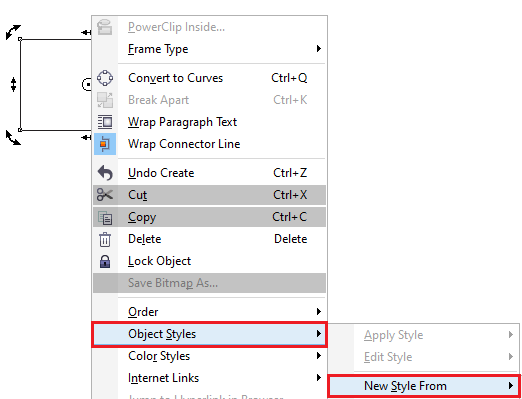
Introduction:
In the realm of graphic design, consistency is a key element that elevates the visual impact of projects. CorelDRAW, a versatile vector graphics editor, provides designers with powerful tools to maintain design harmony. This extensive guide explores the intricate process of creating style sets from objects in CorelDRAW, shedding light on the significance of style continuity, step-by-step instructions for the creation process, and advanced techniques to unleash the full potential of this feature.
Section 1: Understanding the Importance of Style Continuity
1.1 Defining Style Sets in CorelDRAW: Style sets are collections of formatting attributes such as colors, fonts, and effects that can be applied to objects consistently. Explore how style sets provide a streamlined approach to maintaining visual continuity across a design project.
1.2 The Impact of Consistent Design: Delve into the impact of consistent design on the overall aesthetic of a project. Understand how style continuity enhances professionalism, reinforces brand identity, and facilitates a cohesive visual language.
Section 2: Navigating CorelDRAW’s Styling Options
2.1 Exploring Styling Features: Familiarize yourself with CorelDRAW’s robust styling features. From color palettes and font selection to effects and object properties, understand the diverse elements that can be included in a style set.
2.2 Understanding Object-Based Styling: Recognize the concept of object-based styling, where the formatting attributes of a specific object serve as the foundation for creating a comprehensive style set. Learn how this approach enables precise control over design elements.
Section 3: Step-by-Step Guide to Creating Style Sets from Objects
3.1 Selecting the Object: Begin the process by selecting the object from which you want to create a style set. This could be a logo, text box, shape, or any other design element that embodies the desired style.
3.2 Accessing the Style Sets Panel: Navigate to the Style Sets panel in CorelDRAW. Understand the location and functionality of this panel, which serves as the hub for managing and creating style sets within the software.
3.3 Creating a New Style Set: Initiate the creation of a new style set. Explore the options within the Style Sets panel to start a fresh style set based on the attributes of the selected object.
3.4 Naming the Style Set: Assign a meaningful and descriptive name to the style set. A clear name helps identify the style set’s purpose and facilitates easy selection when applying styles to other objects.
3.5 Inclusion of Formatting Attributes: Specify the formatting attributes to be included in the style set. This may encompass color schemes, font styles, effects, and any other design elements present in the selected object.
3.6 Confirming the Style Set Creation: Finalize the creation of the style set. Confirm your selections and choices, ensuring that the style set accurately captures the visual characteristics of the selected object.
Section 4: Applying Style Sets to Other Objects
4.1 Selecting Target Objects: Explore the process of applying style sets to other objects in your design. Choose the target objects that you want to enhance with the formatting attributes of the created style set.
4.2 Accessing the Style Sets Panel for Application: Navigate back to the Style Sets panel. Learn how to access the created style set and apply it to the selected objects, instantly imparting the chosen visual characteristics.
4.3 Fine-Tuning Style Set Application: Understand how to fine-tune the application of style sets. CorelDRAW allows for flexibility in adjusting the intensity or proportion of specific formatting attributes to achieve the desired visual balance.
Section 5: Advanced Techniques for Style Set Customization
5.1 Modifying Style Sets: Delve into the advanced features of modifying existing style sets. Learn how to make adjustments to the attributes stored in a style set, accommodating changes in design requirements.
5.2 Creating Variations of Style Sets: Explore techniques for creating variations of style sets. This advanced approach involves tweaking certain attributes while preserving the core elements, providing versatility in design application.
Section 6: Troubleshooting and Tips for Effective Style Set Management
6.1 Addressing Compatibility Issues: Understand how to troubleshoot compatibility issues when applying style sets across different projects or versions of CorelDRAW. Explore tips for ensuring seamless style set integration.
6.2 Managing Style Libraries: Learn effective strategies for managing your style libraries. From organizing style sets to creating backups, efficient management ensures a streamlined workflow and easy access to the styles you need.
Section 7: Collaborative Workflows and Style Sets
7.1 Sharing Style Sets: In a collaborative design environment, explore the methods for sharing style sets with team members. Learn how to export and import style sets to maintain consistency across projects.
7.2 Establishing Style Set Guidelines: Enhance collaborative workflows by establishing guidelines for style set usage. Communicate best practices and conventions to ensure a unified approach to styling across the design team.
Conclusion:
In conclusion, the ability to create style sets from objects in CorelDRAW is a potent tool for designers seeking to establish and maintain visual consistency in their projects. Whether you are a seasoned professional or a newcomer to the world of graphic design, this comprehensive guide equips you with the knowledge and techniques needed to harness the power of style sets. By understanding the importance of style continuity, navigating CorelDRAW’s styling options, following a step-by-step guide for creating style sets from objects, applying style sets to other objects, exploring advanced customization techniques, and implementing effective troubleshooting and collaborative workflows, designers can unlock the full potential of CorelDRAW’s styling features for a cohesive and visually striking design experience.